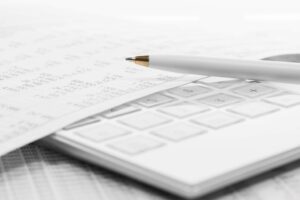
Entities must evaluate each contingent liability to determine whether it is probable, reasonably possible, or remote. If it is probable, the entity must recognize the liability and adjust its financial statements accordingly. If it is reasonably possible, the entity must when is a contingent liability recorded disclose the liability in the notes to the financial statements. Accounting for contingent liabilities is complex because of the uncertainty involved.

Mastering Cash Flow Management: Essential Accounting Tips
- To record a contingent liability in financial statements, it needs to clear two basic criteria based on the probability of occurrence and its corresponding value.
- This is because the event arose in 20X8 and, based on the evidence available, there is a present obligation.
- Probable liabilities are those that are likely to occur, while reasonably possible liabilities are those that are more than remote but less than probable.
- An onerous contract occurs when the costs to fulfill the obligations of a contract exceed the economic benefits expected to be received under it.
- For warranties or product recalls, historical defect rates and repair costs help establish a reasonable estimate.
- Assets include cash and cash equivalents, accounts receivable, inventory, and company property, machinery, and equipment.
This is typically recorded by debiting Warranty Expense and crediting Warranty Liability. If it’s probable that a liability will arise, you’ll need to record it in the financial statements. A contingent liability is a type of liability that may occur in the future due to an event that has already taken place. It’s a potential obligation that’s uncertain and dependent on future circumstances.
Probable Contingency
- Failure to do so can result in penalties, legal action, and damage to the company’s reputation.
- Contingent liabilities can have a significant impact on a company’s financial statements.
- The outcome must be probable, and the amount must be reasonably estimable; only then is the liability accrued and reflected in the company’s accounts.
- Some businesses may face environmental obligations, particularly in the manufacturing, energy and mining sectors.
- Only the contingent liabilities that are the most probable can be recognized as a liability on financial statements.
Therefore, companies must continuously monitor these external factors and adjust their estimates accordingly. In some cases, the estimation of the financial impact might be straightforward, such as when a company has guaranteed a specific amount of debt for another https://www.bookstime.com/bookkeeping-for-independent-contractors entity. However, in other cases, the estimation might be more challenging, such as when dealing with environmental liabilities where the cleanup costs can vary widely based on numerous factors. Two classic examples of contingent liabilities include a company warranty and a lawsuit against the company.
Litigation and Legal Claims

Contingent liabilities are liabilities that may occur if a future event happens just like accrued liabilities and provisions. Similarly, the knowledge of a contingent liability can influence the decision of creditors considering lending capital to a company. The contingent liability may arise and negatively impact the ability of the company to repay its debt.

Impact of Contingent Liabilities on Share Price
It’s a possible debt that hasn’t been incurred yet, but could be due to various circumstances. Yes, some insurance policies cover contingent liabilities, such as product liability insurance, which covers the risk of potential lawsuits arising from defective products. Given their inherent uncertainty, contingent liabilities require careful consideration in terms of recognition, measurement, and disclosure. Each business transaction is recorded using the double-entry accounting method with a credit entry to one account and a debit entry to another.
Pending lawsuit
They must also follow the appropriate measurement requirements under GAAP or IFRS. Proper accounting for retained earnings contingent liabilities is essential for accurate financial reporting and compliance with accounting principles. GAAP accounting rules require that probable contingent liabilities that can be estimated and are likely to occur be recorded in financial statements. Contingent liabilities that are likely to occur but can’t be estimated should be included in a financial statement’s footnotes. Remote or unlikely contingent liabilities aren’t to be included in any financial statement.
SFAS 5: Accounting Standards for Contingent Liabilities and Gains
If these criteria aren’t met but the event is reasonably possible, companies must disclose the nature of the contingency and the potential amount (or range of amounts). If the likelihood is remote, no disclosure is generally required unless required under another ASC topic. However, if a remote contingency is significant enough to potentially mislead financial statement users, the company may voluntarily disclose it.

Recent Comments